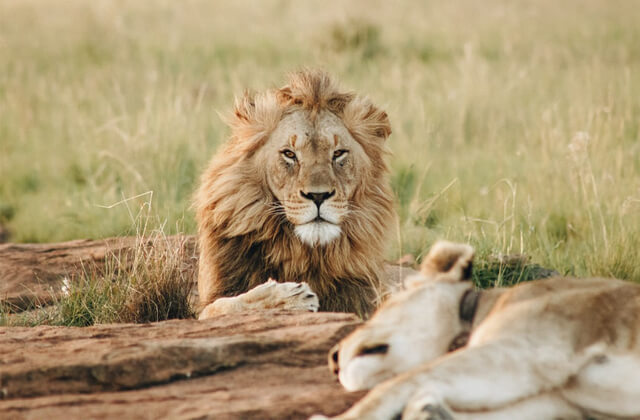Embarking on a wildlife safari can be one of the most exhilarating experiences of your life, offering a unique chance to observe animals in their natural habitats. However, for beginners, it can also be daunting due to the wealth of information and considerations involved. Whether you’re planning a trip to Africa, India, or another wildlife-rich destination, here’s what you need to know to make your safari memorable and enjoyable.
Understanding Wildlife Safaris
A wildlife safari typically involves traveling through a natural area to observe wild animals in their habitats. Safaris can vary in style, from luxurious lodge stays to more rugged camping experiences. The primary goal is to witness and appreciate wildlife, which often includes the “Big Five” (lion, elephant, buffalo, leopard, and rhinoceros) in Africa, but many regions around the world offer unique and diverse wildlife experiences.
Choosing Your Destination
The first step in planning your safari is to select a destination that matches your interests and expectations. Here are some popular safari destinations to consider:
Africa: Countries like Kenya, Tanzania, South Africa, Botswana, and Namibia are renowned for their wildlife and safari experiences. Each region has its own unique ecosystems, animals, and landscapes.
India: If you’re interested in seeing tigers, India is an excellent choice. National parks like Ranthambore and Bandhavgarh offer great opportunities for tiger sightings.
Australia: For a different experience, you can explore Australia wildlife, including kangaroos, koalas, and a wide array of bird species, in places like Kakadu National Park.
When choosing a destination, consider the time of year, as wildlife movements and visibility can vary with the seasons.
Types of Safaris
Understanding the different types of safaris available can help you choose one that suits your preferences:
Game Drives: Most traditional safaris include game drives in open vehicles, allowing you to get close to wildlife while ensuring safety.
Walking Safaris: These involve guided walks through wildlife areas, offering a more immersive experience. It’s a great way to learn about the ecosystem and smaller creatures often overlooked during vehicle tours.
Boat Safaris: Ideal for areas with rivers and lakes, these safaris allow you to observe wildlife from the water, providing a unique perspective.
Fly-In Safaris: For those with limited time, fly-in safaris combine air travel with short stays in remote lodges or camps, maximizing wildlife viewing opportunities.
Photography Safaris: Tailored for photographers, these safaris prioritize locations and times that enhance wildlife photography opportunities.
What to Pack
Packing wisely is crucial for a successful safari. Here are some essentials to consider:
Clothing: Choose airy, lightweight materials that offer protection from the sun. Natural colors like khaki, green, or brown are ideal to avoid startling wildlife. Layering is important as temperatures can fluctuate throughout the day.
Footwear: Comfortable, sturdy shoes or hiking boots are essential for walking safaris and uneven terrain. Pack sandals or flip-flops for relaxing at your lodge.
Binoculars: A good pair of binoculars can enhance your wildlife viewing experience, allowing you to observe animals from a safe distance.
Camera and Equipment: Bring a camera with a good zoom lens to capture wildlife moments. If you’re serious about photography, consider additional lenses and a tripod.
Sunscreen and Insect Repellent: Protect your skin from sunburn and insect bites, particularly in areas where malaria is present.
First Aid Kit: Carry basic first-aid supplies, including any personal medications.
Safety Considerations
While wildlife safaris are generally safe, it’s important to follow guidelines to ensure your safety:
Listen to Guides: Always heed the advice of your guides, as they are knowledgeable about local wildlife and safety protocols.
Stay Inside the Vehicle: When on game drives, remain inside the vehicle unless instructed otherwise. Wildlife can be unpredictable, and it’s essential to maintain a safe distance.
Be Aware of Your Surroundings: Keep an eye on your surroundings, especially during walking safaris, where encounters with wildlife are more likely.
Avoid Loud Noises: Keep noise to a minimum to avoid startling animals and to enhance the experience for yourself and other participants.
Wildlife Etiquette
Being respectful towards wildlife and their habitats is crucial for sustainable tourism. Here are some etiquette tips:
Observe from a Distance: Use binoculars or zoom lenses to get a closer look without disturbing the animals.
Do Not Feed Animals: Feeding wildlife can interfere with their natural eating and behavior patterns.
Leave No Trace: Dispose of waste properly and avoid damaging vegetation or habitats.
Limit Your Movement: Stay quiet and calm during sightings, allowing others to enjoy the experience as well.
Read More: Travel to Egypt: A Journey Through Ancient History
Conclusion
A wildlife safari can be an unforgettable adventure, offering the chance to connect with nature and witness incredible animals up close. By choosing the right destination, understanding the types of safaris available, packing appropriately, and adhering to safety and wildlife etiquette guidelines, you’ll be well-prepared for a memorable journey. Whether you’re photographing majestic elephants in the savannah or watching a pride of lions at sunset, a safari can provide memories that last a lifetime. Enjoy your adventure into the wild!


